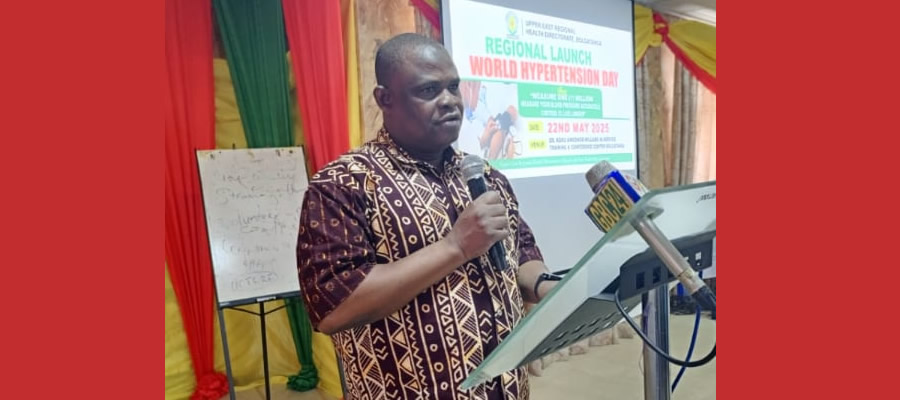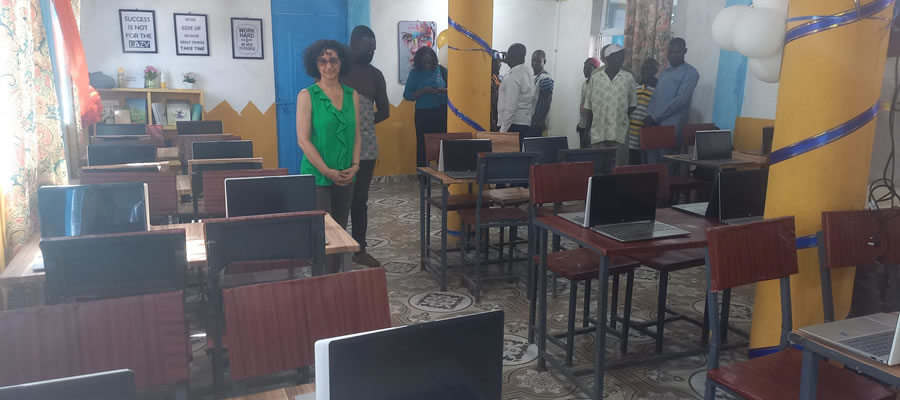

Health Services
Health services provided in the Municipality are both curative and preventive. The services provided are mainly orthodox and traditional.
Health Facilities
The number of health facilities in the Municipality is satisfactory. The Bolgatanga Regional Hospital and Odoi-Agyarko’s Clinic are the only well equipped facilities. The rest that are in most of the deprived parts of the municipality are poorly equipped.
There are mobile clinics run by the Catholic and Presbyterian Churches. Some newly created Community Health Integrated Planning Services (CHIPS) centres have been established at Sherigu, , Zuarungu-Moshie, Aguusi and Gambibgo to provide community based health services.
The service providers comprise of the public and private sectors that include Non-governmental organizations (NGOs) and traditional practitioners.
The type of health facilities, their locations and the populations they serve are presented.
Regional Hospital
1. Health centre
2. Bolgatanga Health centre
3. Zuarungu Health Centre
Clinics
- Sumbrungu Clinic
- Sherigu Clinic
- Plaza Clinic
- Nyariga Clinic
- Sokabisi Clinic
- Zuarungu Clinic
- Gambibgo Clinic
- Rural Help Integrated (Private)
- Asakunde Clinic (Private)
- Police Clinic (Quasi)
Functional CHPS Centres
1. Aguusi CHPS
2. Kalbeo CHPS
3. Katanga CHPS
4. Yorogo Medina CHPS
5. Yarigabisi CHPS
6. Nyokorkor CHPS
The municipality is served by two pharmacies, which are located in the Bolgatanga Township. Only eight (8) out of twenty-seven (27) licensed chemical stores are located outside the Bolgatanga Township. Though efforts have been made to improve access to health service delivery, patronage of these facilities has been low as a result of poverty, illiteracy and ignorance in the rural communities.
Staffing
Similar to the problem of inadequate equipment in rural health facilities the distribution of medical staff is equally considered unfavorable in these areas. Apart from the private clinics and the only hospital, all other health facilities are manned by medical assistants and nurses. The doctor-patient ratio in the municipality is 1 to 28,000 while the nurse-patient ratio is 1: 5000.
Disease Situation
Life expectancy in the municipality is only 50 years; compared to the national figure of 55 years. The high level of illiteracy and poverty as well as the limited access to safe drinking water and the existence of poor sanitation and unhygienic practices have exposed many people to health hazards which contribute to the lowering of the living standards of the people.
The prevalence of diseases like malaria, diarrhea, anaemia, acute respiratory infections and gynaecological disorders as well as the outbreak of epidemics such as cholera, anthrax and CSM can be traced to the above factors. Other conditions such as malnutrition and micro nutrient deficiency (mostly among children) are also prevalent in the municipality.
Malaria and anaemia continue to be a disease of major public health problem. It is the number one cause of morbidity and accounts for 46% of OPD attendance and 11% of all institutional deaths in the municipality. A total of 74,697 malaria cases were recorded during the year 2004. 32,128 representing 43% of cases occurred in children 5 years. About 47 deaths occurred due to malaria, 36 of which occurred in children 5 years of age representing 0.1% under 5 case fatality rate.
About 28% of the population is estimated to be malnourished during the lean season (April to August). This phenomenon has contributed to the high morbidity and infant mortality rates. These top 10 common diseases observed in the municipality have severe effect on the lives of the people. Malaria, diarrhea and anaemia are said to have contributed greatly to most deaths in the municipality, especially among infants. Malaria alone accounts for 25% of all infant deaths in municipality.
HIV/AIDS
With regard to the HIV/AIDS menace, the municipality is as vulnerable as any other in the country. It is estimated that the prevalence rate is about 3%. In 1999 recorded HIV positive cases stood at 120 from a figure of 22 in 1997 – an increase of about 545.5%. As at December 2000, the number of reported cases stood at 85. In 2003 the prevalence rate was reported to be 3% and it increased to 3.8% in 2004 and then dropped to 2% in 2005.
The main contributory factor which brings about the spread of the virus in the municipality is the high prevalence of poverty that compels people especially females into behavioural patterns that unduly expose them to infection.
Due to the long dry season when traditional farming is at a low ebb a very high proportion of the youth moves out of the municipality to the southern part of the country in search of jobs. These migrants who normally end up in the big towns are drawn into unsafe behavioural patterns and as a result, become carriers of HIV/AIDS virus.
In addition to the financial factor, one significant factor that mitigates against current programmes aimed at educating people on the causes of HIV/AIDS is the equating of AIDS to a disease known as “Bayapelugu” believed to be caused by supernatural factors.
Refer to tables in pdf file below.
Health
- Construction of Clinic - ¢100,117,000.00
- Completion of Nurses Quarters -¢84,158,000.00
- Establishment of Youth Club organization of workshop on HIV/AIDS ¢12,000,000.00
- Supply of medical equipment ¢54,000,000
- 2-apartment Nurses Quarters ¢97,000,000
Date Created : 11/24/2017 1:06:46 AM











 facebook
facebook
 twitter
twitter
 Youtube
Youtube
 +233 593 831 280
+233 593 831 280 0800 430 430
0800 430 430 GPS: GE-231-4383
GPS: GE-231-4383 info@ghanadistricts.com
info@ghanadistricts.com Box GP1044, Accra, Ghana
Box GP1044, Accra, Ghana